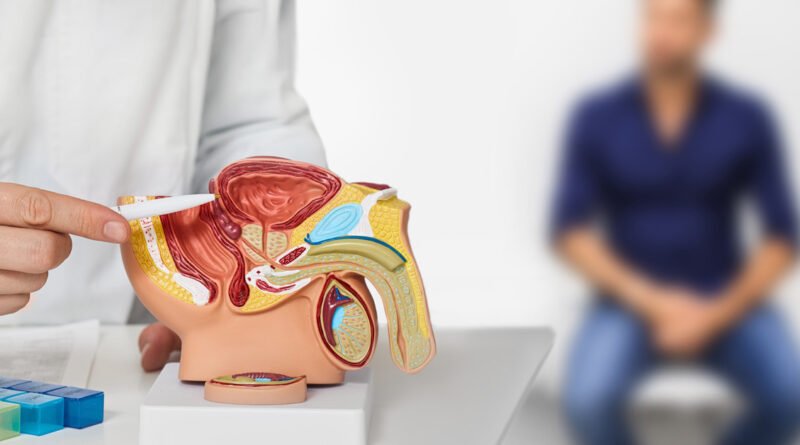Simpler MRI Makes Prostate Cancer Detection Easier
Magnetic resonance imaging (MRI) is a diagnostic imaging method that provides a precise and detailed view of organs and soft tissues. Standard MRI protocols vary depending on the area of the body being imaged, the specific clinical question, etc. In prostate imaging, multiparametric MRI (mpMRI) often has three components.
The first part gives a detailed anatomical image, for example, of the prostate, allowing the doctor to see its structure. The second part measures how water molecules move within the tissue, because cancer restricts water movement, which can highlight lesions. The third part is performed with the injection of a contrast agent into the patient, as tumors absorb the contrast, and this can help in detecting them. This third phase usually requires the presence of a clinician, takes longer, is more expensive, and carries a small risk of side effects.
According to figures published this year, 450,000 men in Europe are diagnosed with prostate cancer annually, and 107,000 die from the disease. Despite this, most European countries still do not have prostate screening programs, or, in other words, most countries in Europe do not yet have organized national programs to regularly test men for prostate cancer. In the UK, prostate cancer is the most common cancer in men, with around 56,000 diagnoses and 12,000 deaths each year.
The PRIME Diagnostic Clinical Trial
PRIME is a clinical trial aimed at improving the accuracy of prostate cancer diagnosis by comparing two MRI techniques: biparametric (bpMRI) and multiparametric (mpMRI). Specifically, it investigates whether a shorter, simpler MRI method (bpMRI) can detect prostate cancer as reliably as the standard, more complex method (mpMRI), that is, without the use of a contrast agent. The trial is funded by the John Black Charitable Foundation and Prostate Cancer UK.
Associate Professor Veeru Kasivisvanathan, the principal investigator of the PRIME trial from UCL Surgery & Interventional Science and UCLH, said that currently, around four million MRI scans are needed globally each year to diagnose prostate cancer, and that time, cost, and staff availability are limiting factors in the number of scans that can be offered. Although MRI scans are clearly beneficial, many men worldwide who need one still cannot access them, making the results of the recent study especially significant.
The results of the PRIME trial are presented in the study, “Biparametric vs Multiparametric MRI for Prostate Cancer Diagnosis.”
In the UK and other countries, experts from 22 hospitals across 12 countries enrolled 555 patients aged 59 to 70 to determine whether a simplified two-part ‘biparametric’ MRI scan could detect prostate cancer as effectively as the standard three-part ‘multiparametric’ MRI scan, which also includes a phase involving the injection of contrast material. Radiologists first evaluated the two-part scan without contrast and then separately evaluated the three-part scan with contrast for each patient. The results showed that biparametric scanning, a shorter procedure, is equally effective in diagnosing prostate cancer. As noted in the study, “Biparametric MRI detected clinically insignificant cancer in 45 of 490 men, compared with 47 of 490 men with the use of multiparametric MRI.”
Two-part MRI also shortens the scan time to just 15-20 minutes and reduces the need for a doctor to be present. As Associate Professor Veeru Kasivisvanathan told Unknown Focus, this frees up doctors’ time for other activities where they are needed most.
How important is the situation in a single hospital, or, more generally, the state of the healthcare system in the countries you included? How could this influence interest in preventive screenings?
Professor Veeru Kasivisvanathan: Yes – running the study across different healthcare systems helps make the results more robust, as the results are applicable to all of those healthcare settings. We didn’t find that there was one particular setting where the outcomes were different. This will confirm a strategy for population-based screening for prostate cancer in men of certain ages. We will explore this within trials that use a short biparametric MRI in screening programs (e.g., the TRANSFORM study in the UK).
The PRIME trial results provide encouraging news for men around the world, showing that biparametric MRI – shorter, simpler, and without a contrast agent- can detect prostate cancer as accurately as traditional multiparametric MRI. For men, this means faster access to diagnostic tests, a lower risk of side effects, and less stress associated with the scan. In addition, this approach can significantly reduce the burden on healthcare systems by lowering costs and easing the workload of clinical staff, allowing more men to receive timely diagnoses and treatment. Ultimately, it represents an important step forward in protecting men’s health.
Image: The Signs of Prostate Cancer


